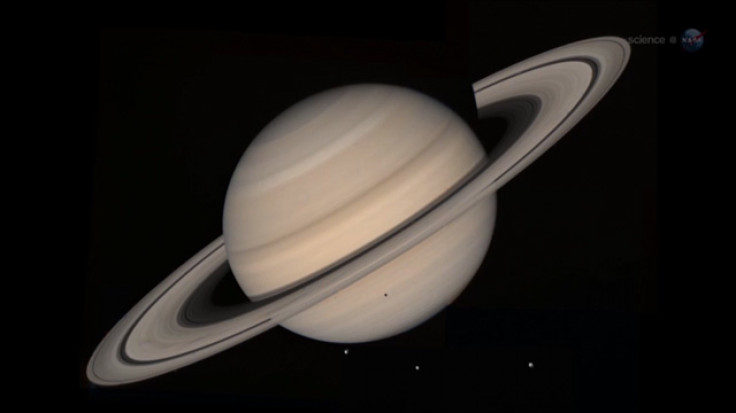2013 Saturn Opposition: How To See Saturn At Its Best, Biggest And Brightest This Year On Sunday, Free Of Charge [VIDEO]

Saturn will appear bigger and brighter between Sunday night and Monday morning than at any other time this year because it will be making its closest approach to Earth during an event known as an opposition, due to the fact Saturn will be opposite the sun in the skies of Earth.
At their closest this year, Earth and Saturn will be less than 808 million miles apart, according to NASA.
The ringed planet will rise at sunset, soar almost overhead by midnight and be visible at least until sunrise, NASA reported. The agency's new ScienceCast video about Earth's close encounter with Saturn appears above.
"If clouds intervene, don’t worry," NASA said. "There are many more opportunities to look. Saturn will remain a golden jewel in the midnight sky for weeks to come."
Meanwhile, there are two great ways to appreciate the celestial event's peak Sunday, according to the robotic telescope service Slooh.
First, Slooh said: "To see the rings of Saturn during opposition, astronomy hobbyists in North America should point their telescopes halfway up the southern sky at around midnight. Though technically in the constellation of Libra, Saturn will be left of Virgo's bright blue star Spica, and will outshine it."
And second, Slooh said, "Slooh Space Camera will broadcast a free, real-time feed of Saturn at opposition, with the giant planet's rings impressively angled -- its best in six years." As a result, armchair astronomers can see the out-of-this-world show on either their personal computers or their Apple iPads.
During the event online, Slooh's panel of experts will include Bob Berman, an author of astronomy books and a columnist for Astronomy magazine, and Paul Cox, an engineer who will be controlling the Slooh telescopes robotically from the U.K.
Slooh’s coverage will begin Sunday at 9:30 p.m. EDT. You can get the start time in your zone via timeanddate.com.
© Copyright IBTimes 2024. All rights reserved.












